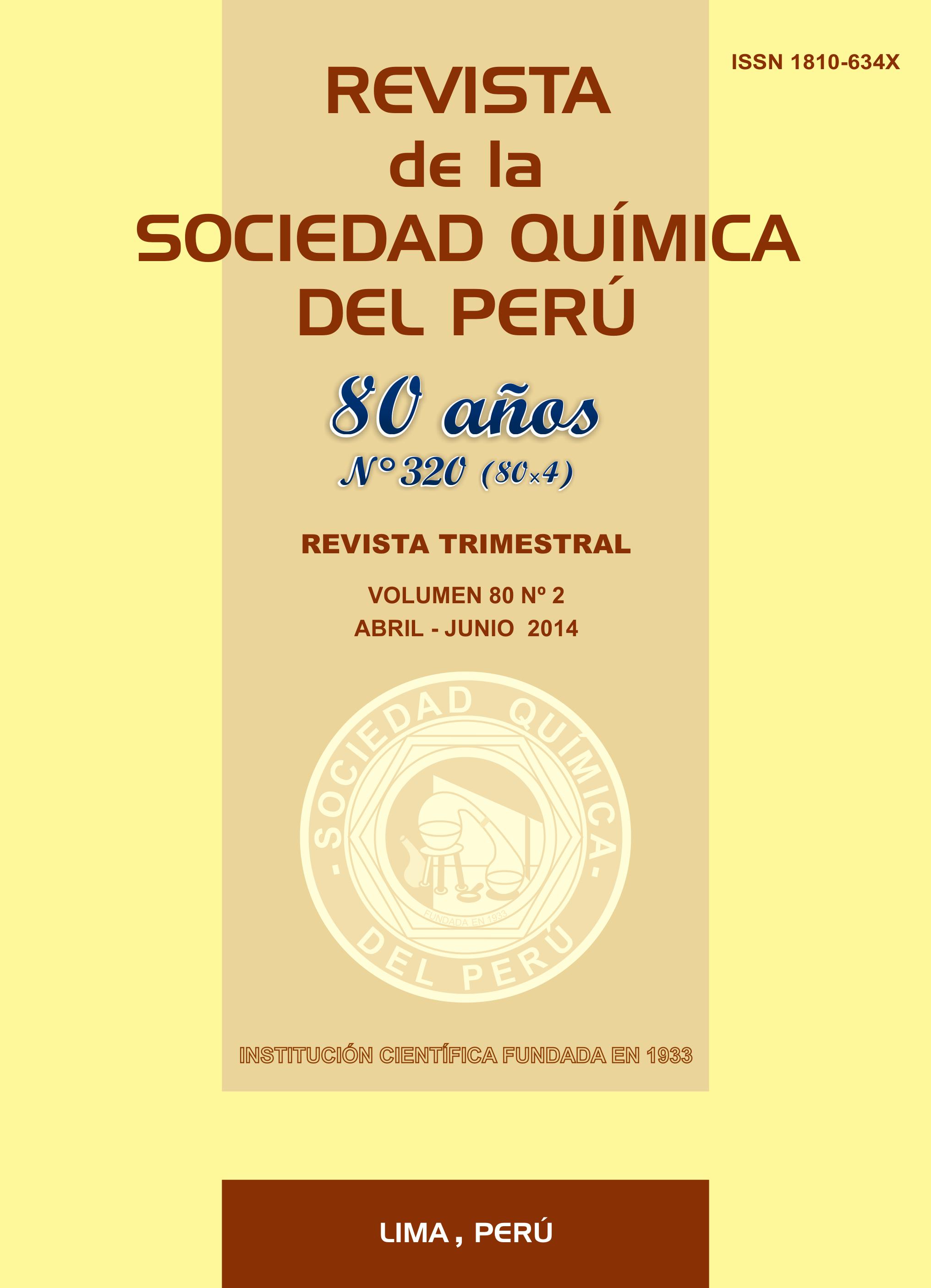USING COMPUTATIONAL CHEMISTRY: SEMIEMPIRICAL Pm3 METHOD, TO ELUCIDATE THE STRUCTURE OF BIS (1,5-DIPHENYL-1,2,4-TRIAZOLE-3-THIONATE) LEAD(II) (Pb(DTT) ).
Abstract
This theoretical study at the level PM3, has been to predict the more stable structure of bis (1,5-diphenyl-1,2,4-triazole-3-thionate) lead (II) (Pb(DTT) ), through the application of the 2 Pearson's Principle Maximum Hardness (PMH). 1 Proposed three possible structures which are reported by Angulo et al , to the based on experimental data. Determined that the structure presented greater hardness and thermodynamics stability is when lead atom is coordinated with the sulfur atom and the hydrazine nitrogen, in Ψbipiramide trigonal structure, coinciding this with the experimental data.
Downloads
Copyright (c) 2014 Sociedad Química del Perú

This work is licensed under a Creative Commons Attribution 4.0 International License.
Revista Arbitrada
Derechos reservados: Prohibido el uso total o parcial del material de esta revista sin indicar la fuente de origen.
Nota: Las referencias comerciales que aparecen en los trabajos no constituyen una recomendación de la
Sociedad Química del Perú










